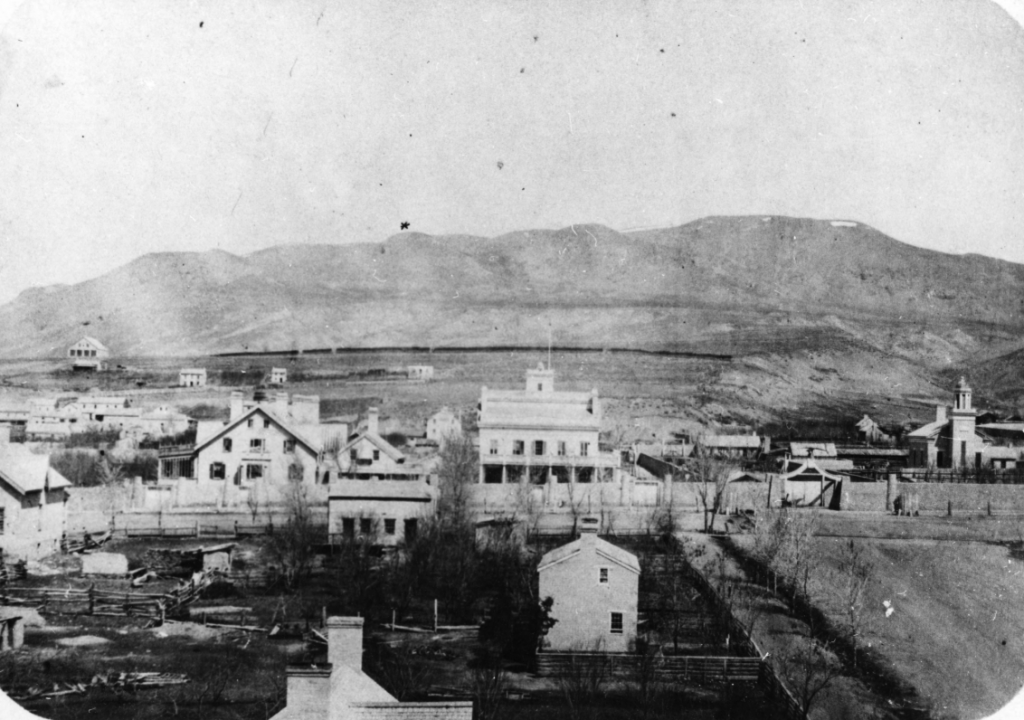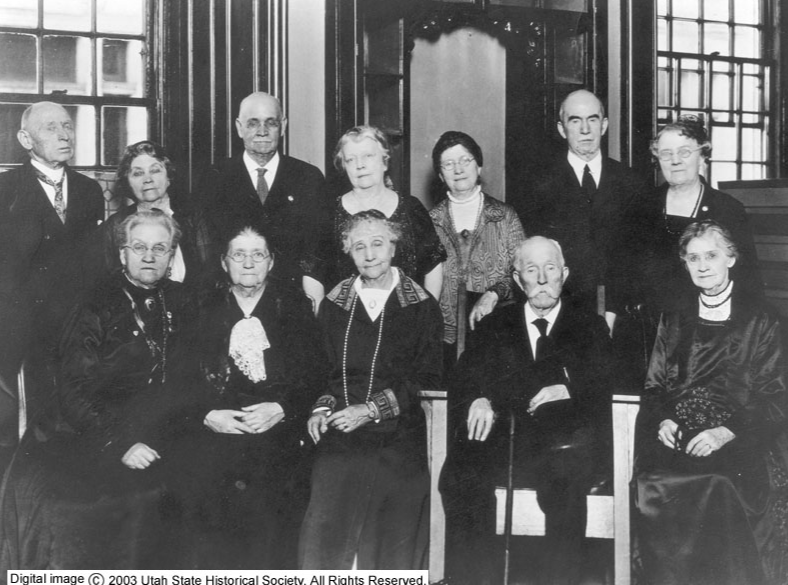Brigham Young influenced Utah in many ways. He brought leadership, organizational skills, and a deep sense of commitment to the table. Young was the president of the Church of Jesus Christ of Latter-day Saints for thirty years, from 1847 to 1877.
In Short

In 1847, Young led LDS church members out of Illinois to the Salt Lake Valley, which was then a part of Mexico. He believed Utah would become a place where members of the LDS church could practice their beliefs without persecution. Young was Utah’s territorial governor from 1851 to 1858. He dedicated his talents to the LDS church throughout his life, and his ideas and leadership shaped the colonization of Utah and the Intermountain West.
More of the Story
Brigham Young was born in Whitingham, Vermont, on June 1, 1801. Young left home when he was sixteen and married his first wife, Mariam Angeline Works, in 1824. He became a member of the Church of Jesus Christ of Latter-day Saints in 1832 while living in New York. Young served the LDS church in many ways. He became its prophet and president in 1847 and served until he died in 1877. His organizational and leadership skills helped church members make new homes in the American West. In fact, Young’s commitment to his religion was so strong he encouraged other members of his faith to settle in Utah, and the LDS church grew in its new western home.
Colonizing Utah
Young’s leadership had a significant influence on the Mormon settlements of Utah. After arriving in the Salt Lake Valley, Young made plans to colonize—or establish political and economic control—over the surrounding area. He wanted Utah to have many members of the church living there. So he urged Mormons from western Europe to move to Utah. Young created the Perpetual Emigration Fund (PEF) to help people who did not have enough money to pay for the move. Church members living in Utah donated to the PEF, and then those who received funds would pay them back once they got to Utah and got a job. The donations and the contributions from workers to the PEF made it possible for more people to migrate to Utah.
Young also directed church members to build settlements in Nevada, Colorado, Idaho, and even California. When he became territorial governor, Young led projects that built roads, railroad tracks, forts, irrigation ditches, and buildings at Temple Square in Salt Lake City.

Relations with Others
Young interacted with people and groups differently as he built a homeland for members of the LDS church. While he invited European immigrants who joined the LDS church to move to Utah, he shared the widely held belief that Native Americans, African Americans, and other underrepresented people were inferior to others. Young counseled members to live peacefully with local Native American nations. However, he also allowed church members to settle on Indigenous lands without permission. He often supported settlers’ violence toward Native American people too. Young allowed for the enslavement of African Americans in Utah. Before settling in Utah, Young prevented Black church members from fully participating in church callings, temple worship, or holding the priesthood.
He was also wary of people who were members of other churches. For example, he advised church members not to shop at stores run by members of other faiths. Many people lost their businesses. Unfortunately, his practices created tension between Utah’s many communities.
Marriage and Family

Young believed in and practiced polygamy, which is when one man marries more than one wife. He had as many as fifty-six wives and fifty-seven children. Young’s promotion and participation in polygamy concerned others, including many government officials. Polygamy was one reason the federal government replaced Young as territorial governor in 1857. No matter what, Young’s large family was well-known by the people living in Utah. After his death, many of his children, including Brigham Young Jr. and Susa Young Gates, were prominent members of Utah’s communities.
Young’s Legacy
Brigham Young died in 1877, leaving a legacy of political, economic, and religious leadership. People also remember him for rapidly developing settlements across a vast region. He has a complex history, but there is no doubt that his opinions, policies, and ideas influenced Utah’s political, social, and religious landscape up until today.
Keep Exploring!
Return to the People Who Made a Difference page here.
Return to the I Love Utah History home page here.